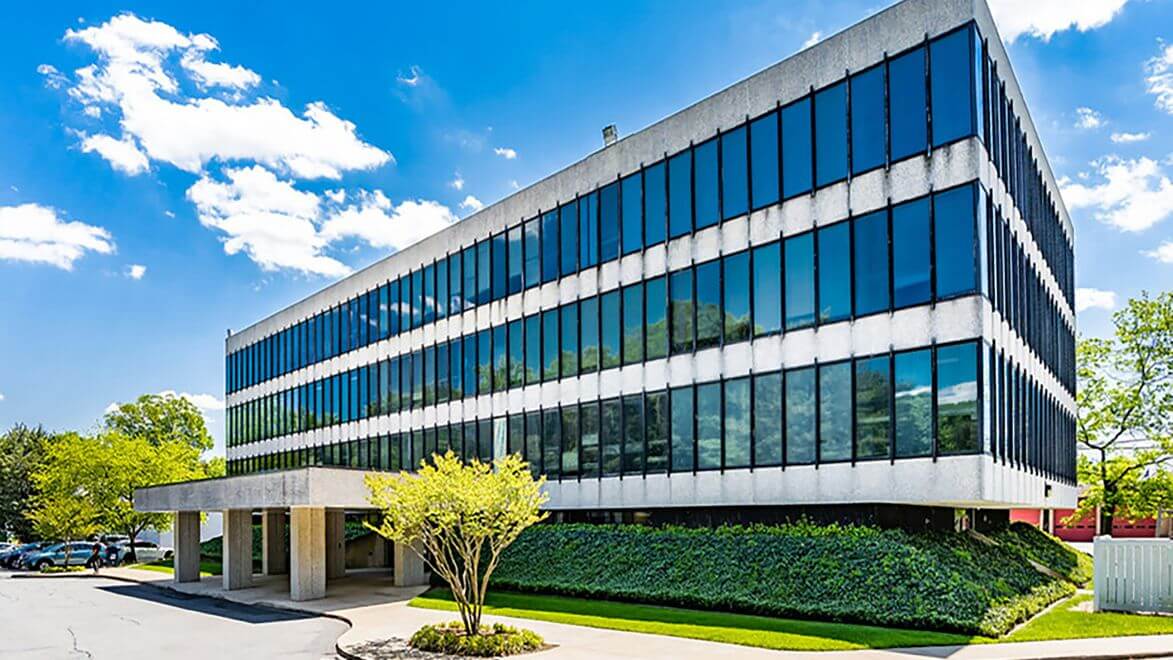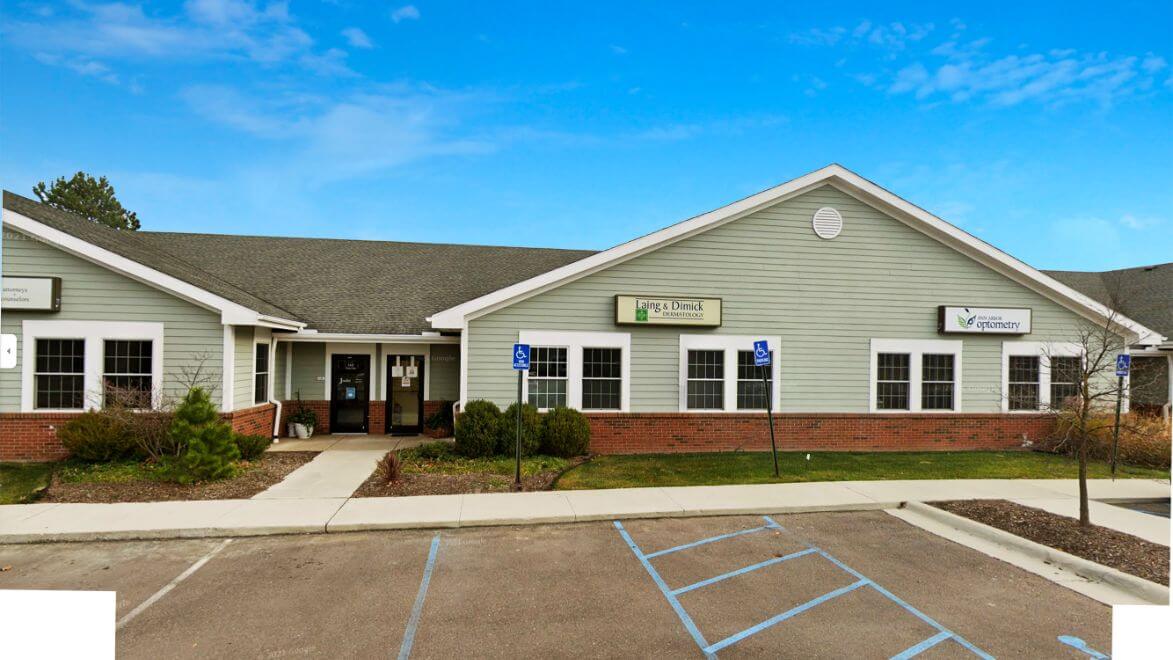Fat Grafting
The process of fat grafting involves harvesting fat from areas where it is abundant, such as the abdomen or thighs, through liposuction. This harvested fat is then purified and carefully injected into the desired areas, providing a natural-looking enhancement. Because the material used is from your own body, the risk of allergic reactions or rejection is significantly minimized.
In facial applications, fat grafting can smooth out wrinkles, fill in hollow areas, and restore youthful contours, leading to a rejuvenated and refreshed appearance. When applied to the buttocks, often referred to as a Brazilian Butt Lift, this technique can enhance shape and volume, achieving a fuller, more sculpted look. For breast enhancement, fat grafting provides a natural alternative to implants, offering subtle increases in volume and improved contour without the need for synthetic materials.
Beyond its aesthetic benefits, fat grafting can also improve the overall texture and quality of the skin, as the stem cells present in the transplanted fat promote healing and regeneration. This multifaceted procedure not only enhances your appearance but also revitalizes your skin, making it a comprehensive solution for those seeking natural beauty enhancements.
Fat Grafting Before and After Photos
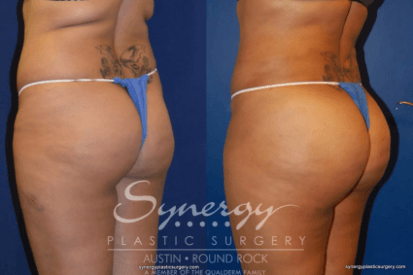
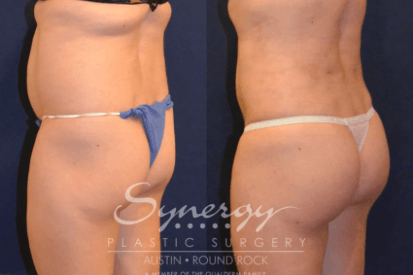
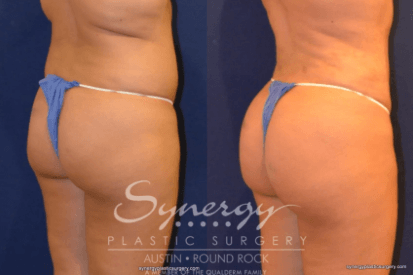
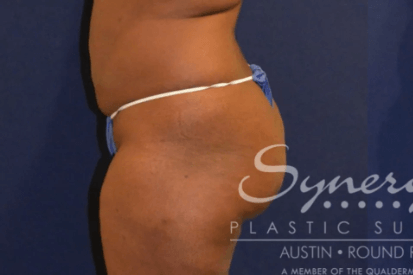
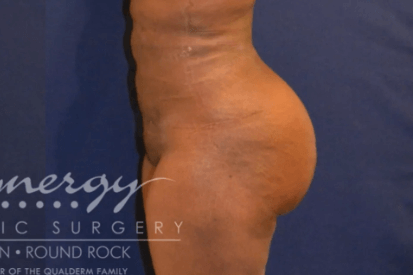
Warning
This content contains sensitive images.
Fat Grafting Explained
Fat grafting is a cosmetic procedure designed to enhance one's appearance using their own body tissue. Fat grafting involves multiple steps. Initially, excess fat is harvested from donor sites like the abdomen, thighs, or buttocks. The extracted fat undergoes purification to remove impurities, resulting in a purified fat graft. This refined fat is then precisely injected into targeted areas like facial lines, cheeks, breasts, or buttocks. The process demands precision for a natural and balanced result. One key advantage of fat grafting is its ability to yield natural-looking outcomes, as the transferred tissue is from the patient's own body. This procedure not only enhances the desired area but also contours the donor site through liposuction. Known for its versatility and long-lasting results, fat grafting is a popular choice for those seeking an organic approach to cosmetic enhancement.
Benefits of Fat Grafting
- Natural-Looking Results: Since the transferred tissue is sourced from the patient's own body, the outcomes tend to look and feel more natural compared to synthetic implants.
- Dual Benefit: The procedure not only enhances the desired area but also contours the donor site through liposuction, providing a two-in-one cosmetic improvement.
- Long-Lasting Results: While not all of the transferred fat may survive, a significant portion can become a permanent part of the new location, leading to enduring results.
- Versatility: Fat grafting can be applied to various cosmetic purposes, such as facial rejuvenation, buttock augmentation, or breast enhancement, offering a versatile solution.
- Minimized Allergic Reactions: As the procedure uses the patient's own tissue, the risk of allergic reactions or rejection is minimal, making it a safer option for many individuals.
- Improved Contouring: Beyond enhancing specific areas, fat grafting allows for the shaping and contouring of the donor site through liposuction, providing an overall improved body silhouette.
- Minimal Scarring: The procedure involves small incisions for both liposuction and injection, resulting in minimal scarring compared to more invasive surgical methods.
- Reduced Downtime: Recovery time is generally shorter compared to more extensive surgical procedures, allowing patients to resume normal activities sooner.
How a Board-certified Dermatologist Can Help
During the initial consultation, a board-certified dermatologist conducts a thorough evaluation, considering factors such as skin type, body contour, and specific aesthetic goals. This careful planning phase is crucial for devising a customized treatment strategy that aligns with the patient’s unique needs and expectations. Their expertise extends to selecting the appropriate donor sites for fat extraction, maximizing the quality and viability of the harvested fat.
The injection phase is where the dermatologist's skill truly shines. Utilizing refined techniques, they strategically inject the purified fat to enhance the targeted areas, whether it’s adding volume to the face, contouring the buttocks, or subtly augmenting the breasts. Their precise approach minimizes the risk of irregularities and ensures a smooth, natural-looking enhancement.
Post-procedure care is another critical aspect managed by board-certified dermatologists. They provide detailed aftercare instructions, monitor the healing process, and offer recommendations for skincare to optimize results and maintain overall skin health. Their commitment to safety and ethics ensures that every procedure is conducted with the highest standards of care, reducing the risk of complications and promoting successful outcomes.
By choosing a board-certified dermatologist for fat grafting, patients can trust in a reliable and professional approach that prioritizes their well-being and aesthetic goals. This expert guidance ensures that each step of the process, from consultation to recovery, is handled with precision and care, leading to optimal and satisfying results.
Fat Grafting FAQs
The longevity of fat grafting results is a common concern for many considering the procedure. While it is true that not all transferred fat cells will survive, a substantial portion does integrate successfully and become permanent. Typically, about 50-70% of the transferred fat survives the procedure. The fat that does survive will remain in place indefinitely, leading to long-lasting results. However, individual experiences can vary based on several factors.
One of the primary factors influencing the durability of fat grafting results is the technique used by the surgeon. Expertly performed procedures by experienced professionals, such as board-certified dermatologists, tend to yield better and more enduring outcomes. They employ precise methods to ensure maximum fat cell viability and successful integration into the target area.
The patient's lifestyle and habits also play a significant role in the longevity of the results. Maintaining a stable weight is crucial, as significant weight fluctuations can affect the transplanted fat cells. Adopting a healthy diet, regular exercise, and proper skincare can further enhance and prolong the effects of the procedure.
Another important consideration is the area of the body where the fat grafting is performed. Different areas may experience varying degrees of fat retention. For instance, facial fat grafting might show longer-lasting results compared to areas with more movement or pressure, such as the buttocks.
Moreover, the body's natural aging process will continue, which can influence the appearance of the grafted areas over time. While fat grafting can provide a significant enhancement, it is not a permanent solution to aging and may require touch-up procedures in the future to maintain the desired look.
The experience of discomfort during and after fat grafting is generally minimal. During the procedure, local anesthesia is commonly administered, ensuring that both the fat harvesting and injection phases are virtually painless for the patient. In some cases, sedation or general anesthesia may be used, depending on the extent of the procedure and the patient's comfort level.
During the fat harvesting process, a thin cannula is used to gently remove fat from donor areas such as the abdomen, thighs, or flanks. The use of local anesthesia numbs the targeted areas, significantly reducing any pain or discomfort. Patients typically report feeling only slight pressure or movement during this part of the procedure.
Once the fat is purified and ready for transfer, the injection phase begins. Again, local anesthesia is applied to the recipient sites to ensure a painless experience. The dermatologist carefully injects the fat into the designated areas, sculpting and contouring to achieve the desired aesthetic outcome.
After the procedure, some post-operative discomfort is to be expected, but it is usually mild and manageable. Patients may experience minor swelling, bruising, and soreness at both the donor and recipient sites. These symptoms are temporary and typically subside within a few days to a couple of weeks.
To manage any post-operative discomfort, appropriate pain management strategies are recommended. Over-the-counter pain relievers, such as acetaminophen or ibuprofen, are often sufficient to alleviate any discomfort. In some cases, the dermatologist may prescribe stronger pain medication for short-term use.
Additionally, following the post-operative care instructions provided by the dermatologist can help minimize discomfort and promote a smooth recovery. This may include recommendations for rest, avoiding strenuous activities, and using cold compresses to reduce swelling.
Absolutely, fat grafting can be seamlessly integrated with a variety of other cosmetic procedures to achieve more comprehensive and synergistic results. This combination approach allows patients to address multiple aesthetic concerns in a single session, enhancing overall outcomes and potentially reducing overall recovery time.
One common combination is fat grafting with a facelift. During a facelift, excess skin is tightened, and underlying tissues are repositioned to create a more youthful contour. Adding fat grafting to this procedure can further enhance the results by restoring lost volume to areas such as the cheeks, temples, and under-eye regions, providing a more natural and rejuvenated appearance.
Fat grafting can also be combined with breast augmentation. While traditional breast implants add volume and shape, fat grafting can fine-tune the results by filling in areas where implants might not achieve the desired effect. This combination can create a more natural look and feel, with the added benefit of using the patient's own tissue.
While some initial changes can be seen right after the procedure, the final results of fat grafting are not immediate. It's common to experience swelling in the treated areas initially, which can obscure the final outcome. Additionally, not all of the transferred fat will survive the procedure; typically, about 50-70% of the fat cells will integrate successfully.
In the days and weeks following the procedure, the body goes through a healing process. Swelling and bruising are normal during this period and will gradually subside. As the swelling diminishes, the enhanced contours and volume from the fat grafting become more apparent. This process can take several weeks to a few months to fully reveal the final results.
During the initial phase, some of the transplanted fat cells will be reabsorbed by the body. The amount of fat that survives and integrates into the tissue varies depending on factors such as the area treated, the technique used, and individual patient factors. The fat that does survive will establish a blood supply and become a permanent part of the treated area, providing long-lasting results.
Patients typically begin to see noticeable improvements within a few weeks as the swelling goes down. However, the full effects of fat grafting are usually seen within three to six months. During this time, the treated areas will continue to refine and settle into their new shape.
To support optimal fat survival and achieve the best possible outcome, it’s important to follow post-procedure care instructions provided by your dermatologist or plastic surgeon. These may include avoiding pressure on the treated areas, maintaining a stable weight, and adhering to a healthy lifestyle.
Fat grafting can offer long-lasting results, as a significant portion of the transferred fat typically becomes permanent. However, individual outcomes may vary due to factors such as the area treated, the patient's lifestyle, and how well the body integrates the grafted fat.
Once the fat is transferred to the desired area, it relies on establishing a new blood supply to survive. Typically, about 50-70% of the transferred fat cells successfully integrate and become a permanent part of the treated area. The fat that survives remains in place indefinitely, contributing to the enhanced contour and volume.
Despite this permanence, it is essential to note that the body continues to age and change over time. Factors such as weight fluctuations, aging, and lifestyle choices can impact the longevity and appearance of the results. For example, significant weight loss or gain can affect the volume of the grafted fat, potentially altering the initial outcome.
What to Expect at Your Fat Grafting Appointment
How to Prepare for Fat Grafting
Planning for Recovery after Fat Grafting
Featured Blogs

- Skin Cancer
- Sun Safety
Explore important factors for effective sun protection and safeguarding your skin against the harmful effects of UV radiation.
Read More
- Skin Care
- Botox
- Injectables or Fillers
- Cosmetic Treatments
Are your wrinkles making you second guess your age? Though we’re all susceptible to fine lines and wrinkles as we get older, there’s no need to have them rattle our confidence.
Read MoreFeatured Products
Check your local office for current stock!
Check your local office for current stock!

